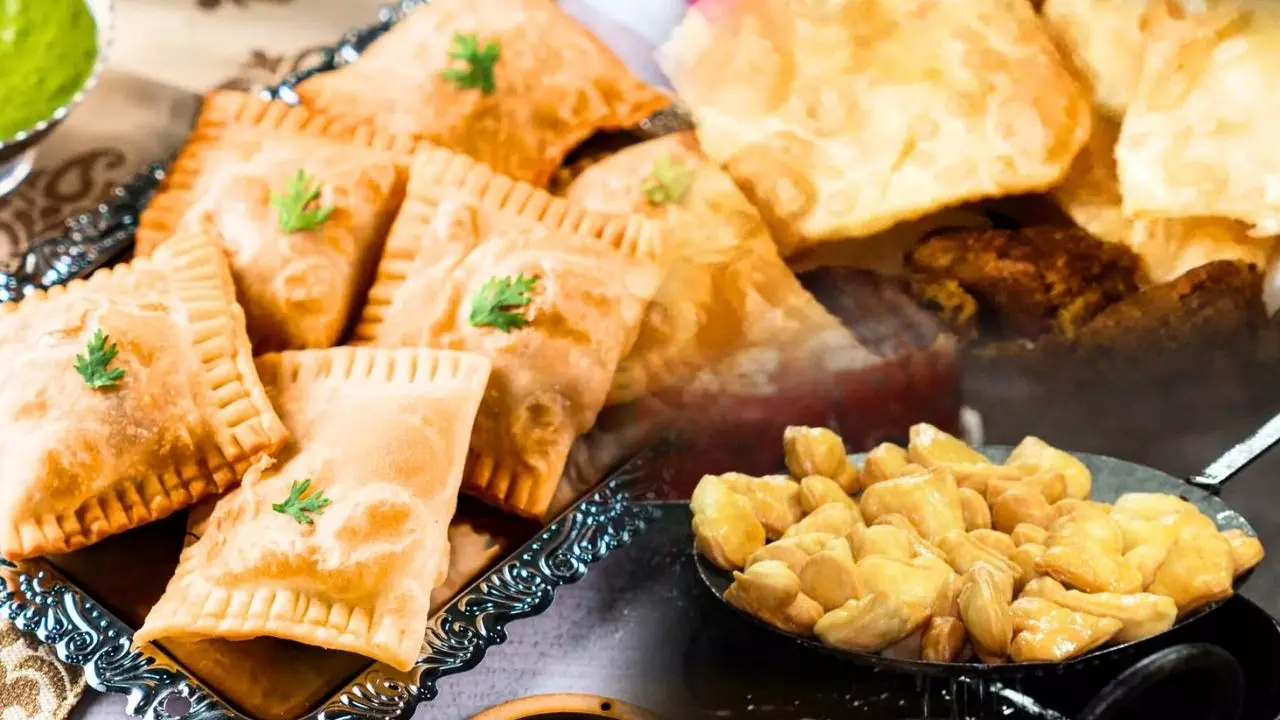
Telangana’s unmatched mutton love isn’t all about biryani and kebabs; meet the lukmi
Telangana eats four times more meat than the national average. From biryanis to lukmi kebabs, what fuels this state’s irresistible love for mutton?

Did you know that Telangana eats more mutton than any other state in India? While the national average meat consumption stands at just about 7 kg per person per year, Telangana’s average shoots up to nearly 24 kg — almost four times higher.
According to the National Meat Research Institute in Chengicherla, Telangana ranks first in mutton consumption across the country. And it’s not just biryanis or curries driving this appetite. The state’s love for mutton extends to its snacks as well.
Also read: How high US tariffs have hit pickles’ trail from Andhra to the Telugu diaspora
The royal lukmi
One such snack that captures Hyderabad’s culinary identity is the lukmi, the city’s own version of the samosa. Unlike the familiar potato-filled triangles, the Hyderabadi Lukmi is a small square-shaped pastry stuffed with spicy mutton keema. Crispy and flaky on the outside, soft and savoury inside, lukmi melts in the mouth with every bite.
The word "lukmi" itself comes from Urdu, meaning “a small piece”. This royal snack traces its roots back to the Nizam era, when it became a must-have at Hyderabadi dawats (feasts).
Tradition and taste
“Lukmi is prepared in dawats and made with lentils. It is stuffed with minced meat and has an amazing taste. It’s prepared only in Hyderabad and has been around since the time of the Nizam,” said Amjad Ali Khan, a Hyderabadi food expert.
Lukmis are often served as starters at weddings and special occasions, paired with mint chutney or tomato ketchup, keeping alive a legacy that combines flavour with heritage.
Also read: Butter Chicken, Hyderabadi Biryani among Top 100 dishes across the world
The kebab connection
“In every dawat, lukmi kebab is made. We grind the minced meat, marinate it with coriander powder, garam masala, saffron, cardamom, lentils, and spices, and leave it for two hours before grilling,” explained Chef Syed Usman Ali.
“We eat mutton sheekh kebab together with lukmi kebab. It’s made with real ghee, butter, and asafoetida,” said Shail Dastgir, a kebab master.
A legacy of flavour
From the smoky sheekh kebabs to the flaky lukmi, Telangana’s mutton culture represents more than just taste it’s a story of heritage, hospitality, and passion. For Hyderabadi households, meat is not just food; it’s a tradition passed down through generations.
Whether it’s a festive feast or an everyday meal, Telangana’s love affair with mutton continues to define its rich culinary identity, one lukmi at a time.
(The content above has been transcribed from video using a fine-tuned AI model. To ensure accuracy, quality, and editorial integrity, we employ a Human-In-The-Loop (HITL) process. While AI assists in creating the initial draft, our experienced editorial team carefully reviews, edits, and refines the content before publication. At The Federal, we combine the efficiency of AI with the expertise of human editors to deliver reliable and insightful journalism.)

